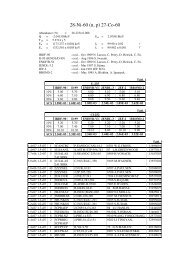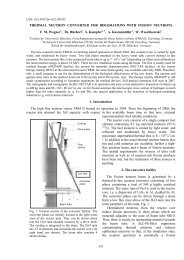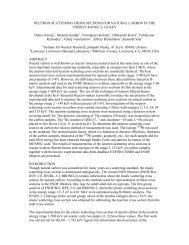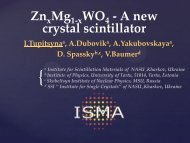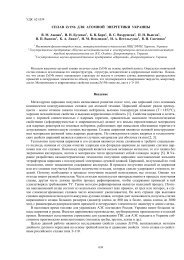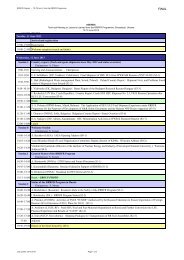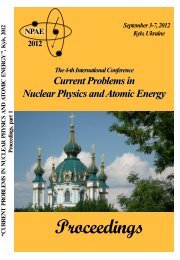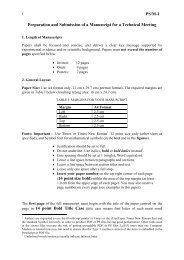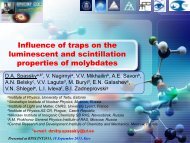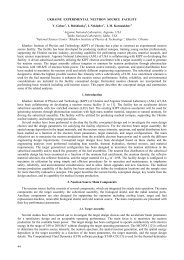International Reactor Dosimetry File 2002 - IAEA Publications
International Reactor Dosimetry File 2002 - IAEA Publications
International Reactor Dosimetry File 2002 - IAEA Publications
Create successful ePaper yourself
Turn your PDF publications into a flip-book with our unique Google optimized e-Paper software.
Such approximate calculations are not necessarily applicable to all<br />
material types used for a specific reactor dosimetry application. The adequacy<br />
of the approximation may also be tested by using samples of different<br />
thickness, or comparing the results from dilute and non-dilute types of<br />
material. There are also a number of other effects that can have a significant<br />
impact on the calculation of activation rates, such as flux depression or the<br />
partial shielding of one sample by an adjacent sample. Such effects may not add<br />
linearly, especially when neutron scattering effects are significant.<br />
II.1. USEFUL APPROXIMATIONS FOR COVER FOILS<br />
The attenuation of neutrons in a neutron beam is given simply by the<br />
equation:<br />
F = exp(–x)<br />
where x = Nst, s is the total neutron absorption cross-section and t is the<br />
thickness of the cover foil. This equation can be integrated over all angles for<br />
an isotropic neutron flux:<br />
F = E 2 (x)<br />
where E 2 is the second exponential integral. Such a correction can then be<br />
applied to the neutron cross-section for any given activation reaction in each<br />
neutron energy group.<br />
II.2. NEUTRON GROUP STRUCTURES FOR COVER OR<br />
SELF-SHIELDING CORRECTIONS<br />
Since many neutron resonances are very narrow in width, a computer<br />
code such as LINEAR is required to process the point cross-sections so that the<br />
narrow neutron resonances will be adequately represented. Using a fixed<br />
group structure (such as the 640 groups in IRDF-<strong>2002</strong>) may not be adequate<br />
for reactions with narrow resonance structures. The cover and self-shielding<br />
calculations should be performed for each neutron energy group in the fine<br />
structure that results from the LINEAR processing code. Doppler broadening<br />
must also be taken into account at the temperature of the reactor experiments,<br />
using computer codes in the PREPRO<strong>2002</strong> library available on the <strong>IAEA</strong> web<br />
site [II.1]. After the neutron self-shielding corrections have been applied to the<br />
110



